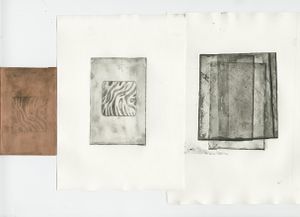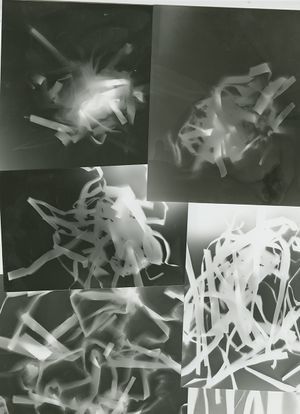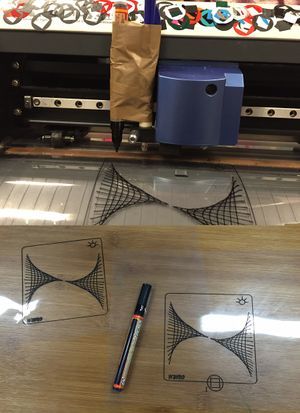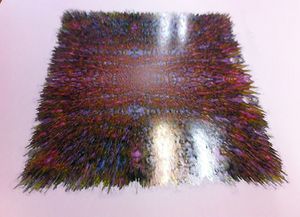User:JeroenRijnart
Jeroen Rijnart; 0873511@hr.nl
This wiki is a work in progress
Contents
Why I am a maker (first draft):
I like the idea that something I imagined can take physical or visual form.
I like the idea of creating something and sending it off into the world, reaching someone, somewhere sometime, without me knowing who. To let it up to the user/viewer what to think of it or what to do with it.
I like the idea that something that sprung from my imagination can influence someone else's imagination, especially in this day and age where the other person can be in a different corner of the world.
- Losing/gaining control
- making something with/for someone else, community
- instruct-able, video, ask someone to make something based on my instruction
- chain reaction
Historical example: Etching
The pre industrial technique I chose was etching, turns out I'm not really good at drawing in copper. Although I like the textures you get from this printing technique, so I printed the backside of my plate.
Comparative exanple: Riso v Xerox
A new skill: Photograms as a reproduction technique
The technique
A photogram is a photographic image made without a camera by placing objects directly onto the surface of a light-sensitive material such as photographic paper and then exposing it to light. The usual result is a negative shadow image that shows variations in tone that depends upon the transparency of the objects used. Areas of the paper that have received no light appear white; those exposed through transparent or semi-transparent objects appear grey. In a darkroom, or a darkened room, objects are arranged on top a piece of photographic material, usually photographic paper. When the operator is satisfied with the arrangement, the photographic material is exposed with light, usually by switching on an enlarger or other artificial light source. The material is then processed, washed and dried.
What I did
The first photograms I made where made with cut up paper, the images produced were chaotic and expressive, it was almost impossible to make the same image twice. After that I made a stencil using transparent paper, an acrylic paint marker and a plotter so I could transfer my design to light sensitive paper. Using the lights provided in the dark room resulted in a very clean print, so I started to use a lighter to expose the paper for a more blurry effect.
Pushing a technique to the limit: Wet printing






